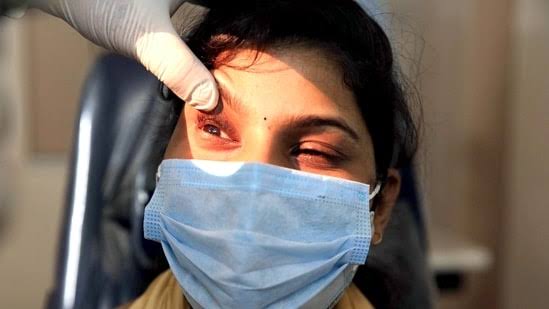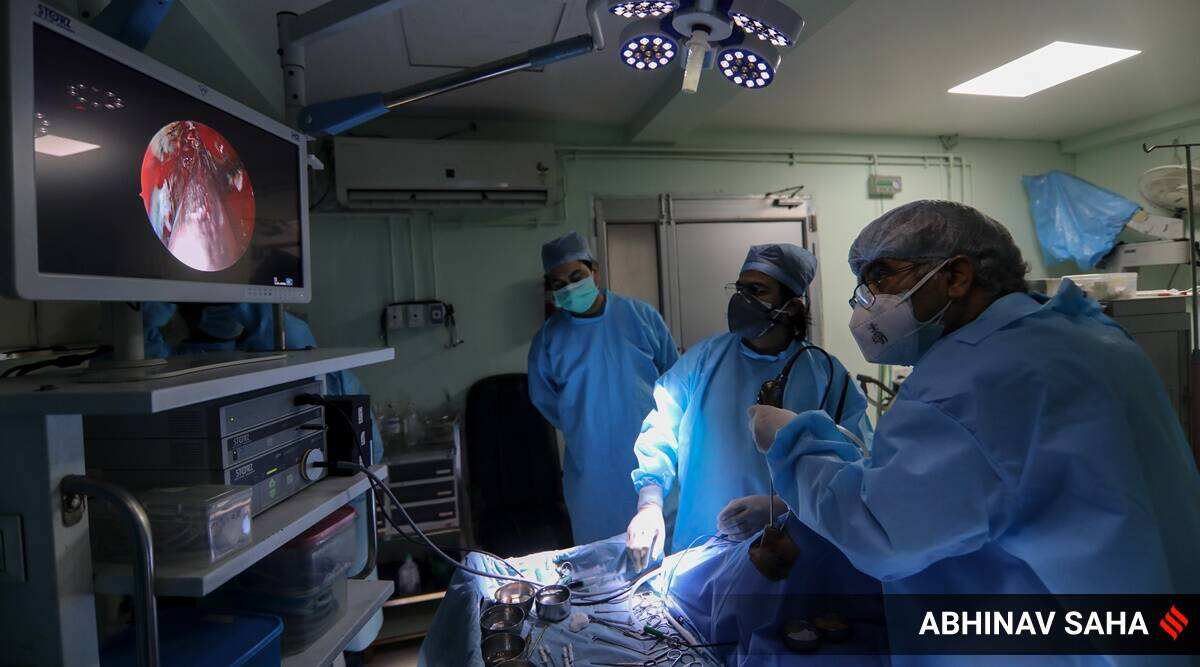Black fungus or Mucormycosis A rare and fatal fungal infection, also known as mucormycosis or black fungus. In India, it is infecting patients infected with Kovid 19.
Along with the advice to avoid unconfirmed messages on social media, experts said that it is not an infectious disease and is mainly seen in people whose immunity is very weak. According to AIIMS Delhi expert Dr. Ananya Gupta, black fungus does not spread from animals to humans. It can happen only to those with weak immunity due to many different reasons. Including using steroids for a long time. Dr Sheetal Verma said about this that Mucor (black fungus) is mainly found in soil, plants, rotten fruits and vegetables. It enters through the breath and affects the sinuses or lungs. However, in most cases, the immune system destroys all of them and only in very rare cases does it infect people.
.jpeg)
Source
Signs and symptoms
Its symptoms also depend on where in the body the fungus is growing.
Symptoms of sinus and cerebrovascular mucormycosis include
head ache
congestion in the nose or sinuses,
Quickly developing dark sores in the nose or upper part of the mouth.
feverish
Symptoms of pulmonary mucormycosis include
fever
cough
Pain in chest
difficulty breathing
Symptoms of gastrointestinal mucormycosis include:
stomach ache
nausea and vomiting
Gastrointestinal bleeding

Source
Treatment
If black fungus is suspected, amphotericin B therapy should be given immediately due to the rapid spread of the disease and high mortality. Amphotericin B is usually administered for an additional 4-6 weeks after initial therapy has begun to ensure eradication of the infection. This fungal disease is highly dangerous, especially if it spreads to the brain, resulting in the death of the patient. If it affects the eye, removal of the eye is the only way to prevent further spread to the brain. The surgery can be very drastic, and in some cases of disease involving the nasal cavity and brain, removal of infected brain tissue may be required. In some cases the surgery can be distorted because it may involve removing the structure of the palate, nasal cavity, or eye. The surgery can be extended to more than one operation. It has been hypothesized that hyperbaric oxygen may be beneficial as an adjuvant therapy because the high oxygen pressure enhances the ability of neutrophils to kill fungi.
covid-19
Main article: Mucormycosis in the COVID-19 pandemic
During the Kovid-19 epidemic, some such cases were reported in India, in which some patients after recovering from Kovid showed mucormycosis infection. In mid-December 2020, 44 such cases were reported in Ahmedabad, in which 9 people died. Such cases have been seen in Mumbai and Delhi also. All these cases have been seen around the nose, eyes and brain.
According to the report, cases of mucormycosis associated with Kovid 19 are quite rare. As of 9 January 2021, only eight such cases have been registered in different corners of the world. According to these reports, diabetic patients are at the highest risk from this infection. Most of the cases have been seen during hospitalization, in which these cases have mostly come up after 10 to 14 days of hospitalization. According to an estimate, about 40% to 80% of the people who have come in contact with this fungus have died. These deaths depend on the place of infection of the patient as well as on his health.
Cases of mucormycosis associated with covid have been reported mainly in India. According to an explanation, these cases in India are being seen due to the cases of excessive covid infection and the presence of more number of diabetic patients. In May 2021, the Indian Council of Medical Research has issued guidelines for the identification and treatment of mucormycosis associated with COVID-19.
In view of their ever-increasing cases, the Rajasthan government has declared it a pandemic on 19 May 2021. Along with the Rajasthan government, Haryana, Tamil Nadu, Telangana, Gujarat and Bihar also declared this fungus an epidemic.
StAy HoMe 🏠 sTaY sAfE❤
Thank you🌹🌹

.jpeg)
